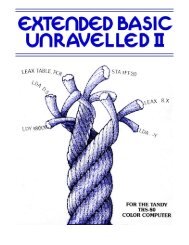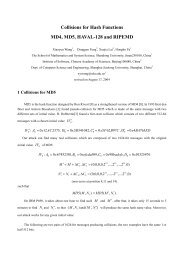sonet 101
sonet 101
sonet 101
Create successful ePaper yourself
Turn your PDF publications into a flip-book with our unique Google optimized e-Paper software.
SONET Networking<br />
Enhanced Survivability/Bidirectional Line-Switched Rings<br />
Network survivability is another important trend. Survivable rings and route<br />
diversity are cost-effective solutions for the metropolitan environment. SONET<br />
can implement with higher efficiency the restoration schemes already in place<br />
with asynchronous systems. These include 1 + 1 diverse routing, self-healing<br />
rings, and digital cross-connects.<br />
SONET-based bidirectional line-switched rings (BLSRs) provide “re-useable bandwidth”<br />
for more efficient inter-node transport in “meshed” networks. A meshed<br />
network means the traffic is more or less evenly distributed among all the nodes<br />
rather than being funneled through a few hubbing locations.<br />
When a traffic tributary is dropped off at one node in a BLSR, the leftover capacity<br />
becomes available for “re-use” to pick up traffic originating at that node. If<br />
there is no new traffic, the tributary continues to another node, where it can pick<br />
up traffic originating at that location.<br />
Half the available bandwidth in a BLSR is allocated as a working route, and the<br />
other half is reserved for protection routing. Thus, in an OC-48 application,<br />
working traffic is placed in the first 24 STS-1 time-slots, with time-slots 25<br />
through 48 serving as the protection facility.<br />
49<br />
SONET supports both BLSRs for inter-node networks and unidirectional pathswitched<br />
rings (UPSRs) used in access networks.<br />
SONET can be easily deployed in the inter-node network since it is compatible<br />
with DS-3, a signal on which existing asynchronous fiber transport systems are<br />
based. (See Figure 5-3.)<br />
A network provider can begin deploying SONET whenever existing asynchronous<br />
systems exhaust their current optical channel capacity. The initial advantage is to<br />
provide synchronous transport of the existing DS-3 or even DS-1 traffic and to<br />
simplify grooming.<br />
The simplest implementation strategy begins by deploying SONET point-to-point<br />
systems. As the network evolves, hubs are added to the network for grooming or<br />
restoration. These may be SONET add/drop multiplexers or SONET hubs. As<br />
more SONET network elements are added, the network becomes more and more<br />
integrated and homogenous in terms of control and OAM&P features.<br />
SONET <strong>101</strong>






